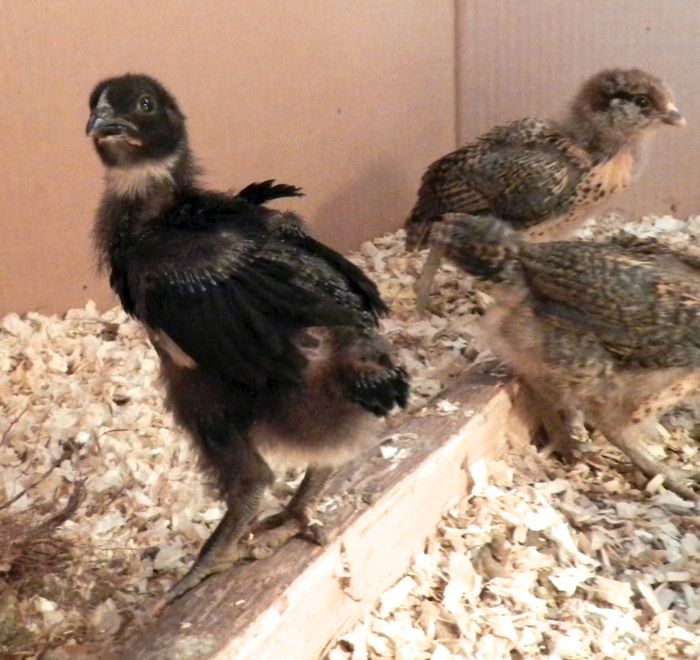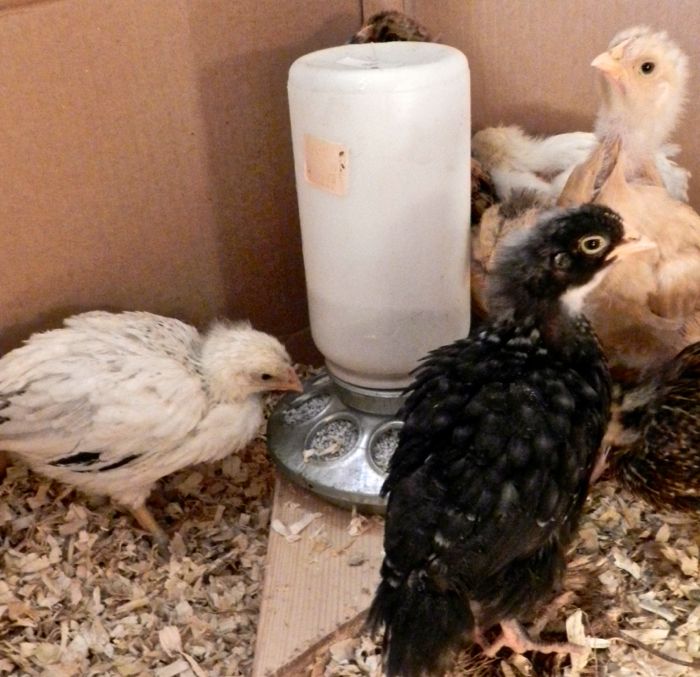Chickens aren’t exactly aerodynamic. At best, some of the petite and sleek bantams can fly well enough to get over a fence, and some of the heavier birds can flap enough to get up onto a low branch. This doesn’t mean that your chickens should spend all of their time on the ground. Mature hens need to sleep on roosts for both health and comfort. Chickens poop a lot at night. A chicken that is sleeping on the ground or in a nesting box is sitting on her own damp and ammonia-fumed waste. Roosts are also important for your flock’s social life. Chickens can sort out their affiliations during the evening jostling for a sleeping spot next to their friends. During the day hens that need to get away from the pecking order drama (like Siouxsie) can hop up onto a roost for some peace.
All of these reasons for having roosts apply to your chicks, too. Although they innately know to roost, they do need a bit of practice and baby-sized roosts to get them started.
A piece of wood can be a balance beam for your chicks.
Even better is a roost made from a branch nailed onto two pieces of scrap wood. The first week I put this roost into the brooder. There was some worry about what it was, but soon the chicks were up, over, and perching.
I added a second roost, this one further off of the ground. The chicks hopped right on
and were soon comfortable enough to bask in the heat lamp and get their fluffy little bottoms toasty warm from this perch.
Meanwhile, the chicks are getting larger, growing long and sturdy feathers, and running, flapping, and getting lift-off. The sides of the brooder have been raised.
Soon the chicks will outgrow this enclosure. Twenty six chicks take up a lot of space!. More changes are in store. I’ll fill you in later this week.















